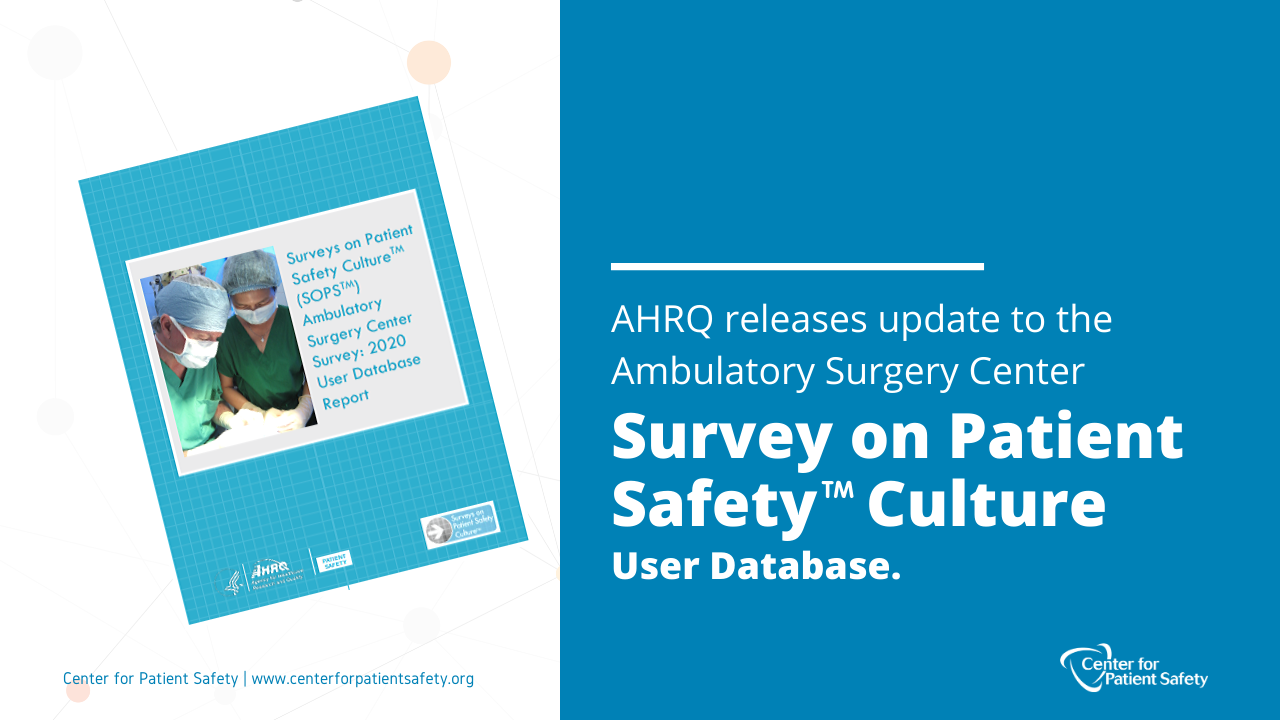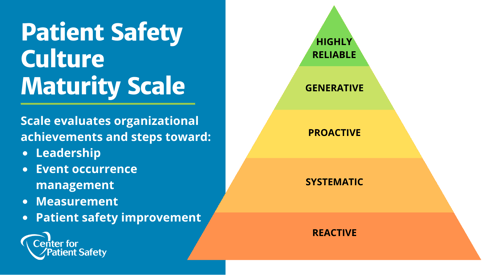AHRQ Updates Culture Compares for Ambulatory Surgery Centers (ASCs)

The Agency for Healthcare Research and Quality (AHRQ) recently released the Ambulatory Surgery Center Survey on Patient Safety (SOPS™) Culture Database, offering new insight into the safety culture of that growing component of healthcare. Overall, the 2020 AHRQ report suggests most staff working in ASCs have strong patient safety tendencies. 86% of respondents gave their organization a patient safety rating of “Excellent” or “Very Good,” and 93% of respondents indicated that team members stop to discuss the overall plan for a patient before starting procedures.
The lowest composite score in the aggregated data was in the category “Staffing, Work Pressure, and Pace.” 74% of respondents felt that low staffing levels contribute to rushing and improper preparations for procedures, a common result in surveys in other healthcare areas, too. Staffing changes often occur in response to changes in financial stability and reimbursement. Yet CPS has learned that organizations can still improve their scores in this area with appropriate conversations with their staff about operational issues such as staffing levels, acuity models, workload, and flexing staff assignments. The survey can help organization leaders identify the areas where they need to do that work.
The report reflects data voluntarily submitted from organizations administering AHRQ’s Ambulatory Surgery Center (ASC) culture survey. AHRQ initially released the culture survey results for ASCs in 2014 with a small pilot dataset of 59 surgery centers. The latest report provides updated comparisons from 10,527 respondents at 282 ASCs, with data collected by AHRQ between June to July 2019 from surveys administered anytime between July 2017 and June 2019.
Though several tools are available to measure safety culture, providers use the AHRQ surveys most frequently for several reasons. They are open-source, and the suite of surveys has been validated and psychometrically tested, translated into dozens of languages, administered in multiple countries, and each is supported by a strong compare database for benchmarking. AHRQ’s surveys are freely available to any organization, and the aggregated database opens every two years for public submission. AHRQ offers robust comparative datasets for their surveys specific to hospitals, nursing homes, medical offices, and community pharmacies, as well as the newer collection of ASC data. Since 2004, when AHRQ released the first hospital data, extensive research using the collected data has revealed culture correlations with such outcomes as infection rates, turnover, and organizational reliability.
The ASC survey was the last new survey released by AHRQ in 2015. Each question and composite reflect staff beliefs, values, and norms around patient safety. With 27 questions that roll up into eight composite measures, ASCs can measure staff perceptions related to areas such as communication openness, response to mistakes, staff training adequacy, and teamwork. Review of low-scoring components of an ASC’s culture provides support for new program development, retraining on current processes, or focused work on relationships in the organization. High scores in domains can afford an opportunity to celebrate organizational successes. Surveying repeatedly over time produces measurable data, allowing leaders to identify trends and develop action plans for negative changes.
There is incredible value in the ability to compare your own organization to others. While profit, turnover, and other metrics can indirectly reflect on staff attitudes, the survey gives specific information about how a key resource (the staff) feels about the organization.The highest composite score was Organizational Learning and Continuous Improvement. 92% of respondents felt their organization actively looks for ways to improve patient safety and reduce problems. This metric strongly reflects the ASC industry where smaller organizations are more agile and can readily adopt change, a valuable scenario when looking to improve lower scoring areas.

Patient safety culture is crucial to retaining the right talent; it also impacts your brand identity. Therefore, maintaining a positive work culture should be a part of your organizational strategy, reviewed annually, and addressed daily. A punitive culture will suppress staff engagement, reduce process improvement, and discourage change. The survey can help pinpoint the aspects of staff experience that contribute to these negative outcomes. A poor safety culture environment can result in preventable harm to patients. A positive culture, on the other hand, can create a safer and more positive environment for patients.
The survey provides useful feedback and direction for the next steps, allowing the organization to select a few specific and targeted areas for improvement. By looking for ways to address the lower scoring composites on the survey, organizations can continually strive to maintain your culture.
Culture can take years to change but evaluating the culture with a validated method that provides direction and measures adjustments over time will make the changes implement much more effective.
.png)

